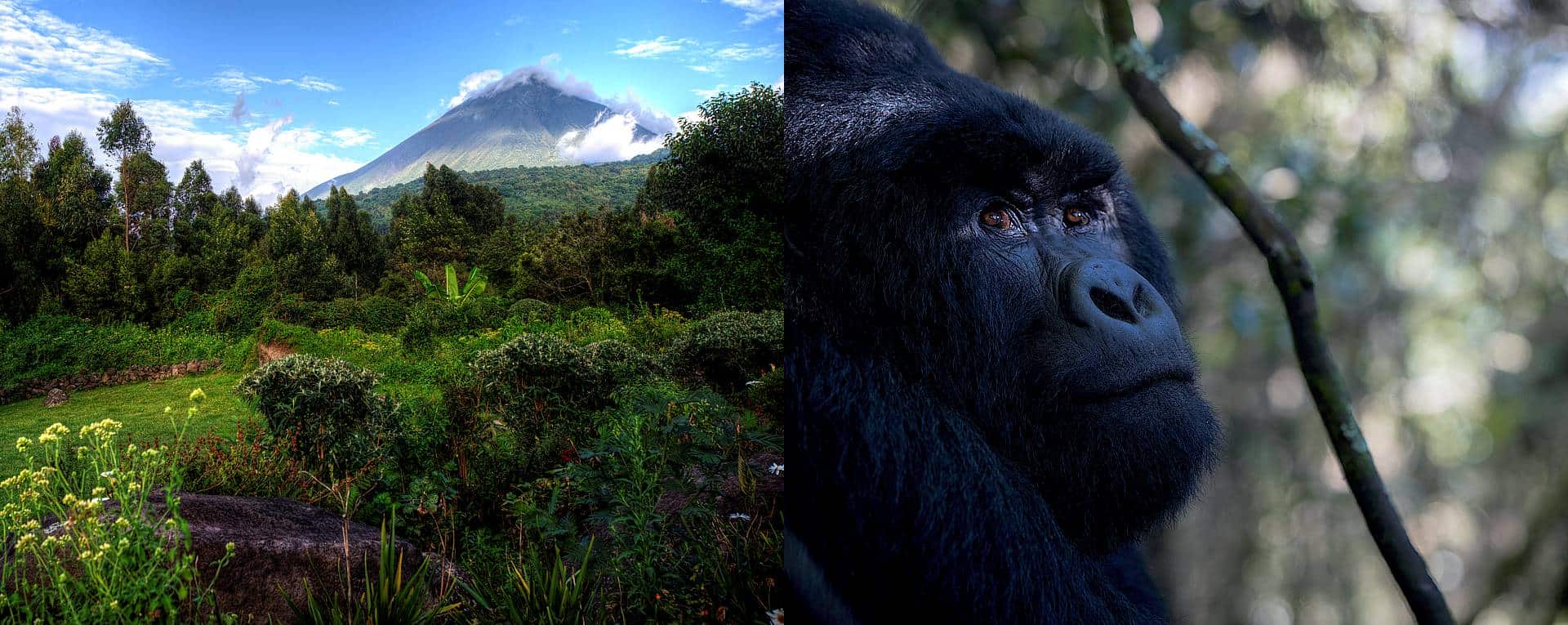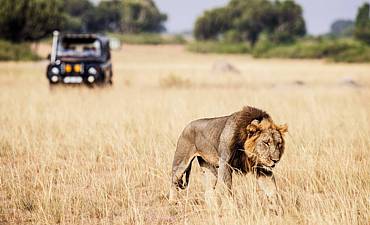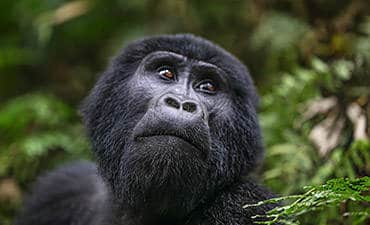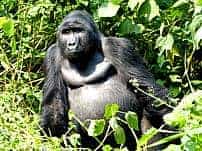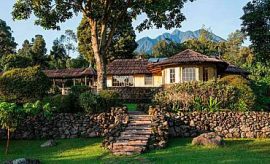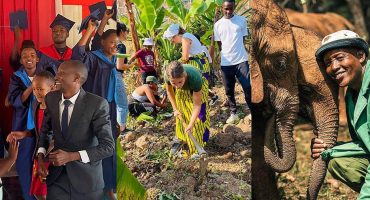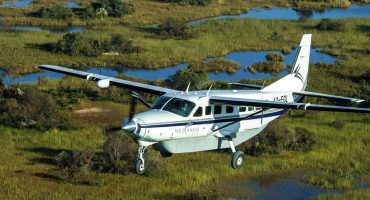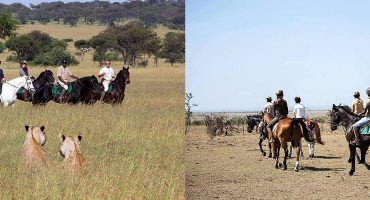SAFARI TREKKING GUIDE ON MGAHINGA GORILLA NATIONAL PARK IN UGANDA
Mgahinga Park Introduction - Location, Wildlife & History
Mgahinga Gorilla National Park is part of the greater Virunga Conservation Area, a 434-square-kilometer (167 square miles) swath of protected land that encompasses parts of Uganda, Rwanda, and the Democratic Republic of Congo. Mgahinga Park occupies a tiny nook in the southwest corner of Uganda and is the smallest but perhaps most spectacular conservation area in the country. Spread over an area of just 33.7 square kilometers (13 square miles), the reserve sits at altitudes ranging from 2227 meters to 4127 meters. Visitors who spend their tour holidays at the park are always delighted to see the misty cloud cover that typically crowns the three volcanic peaks which dominate the landscape. As part of your Uganda safari vacation itinerary, you will be able to view Mount Gahinga, which towers at 3474 feet, Mount Muhavura at 4127 feet, and Mount Sabinyo at 3645 feet. View the crater lake on Muhavura, the swampy caldera on the top of Mgahinga, and the spectacular vistas from Sabinyo.Key Takeaways
- Part of the Virunga Conservation Area that lies across Uganda, Rwanda, and the Democratic Republic of Congo
- Covering an area of 434-square-kilometers allocated by the three countries for the conservation of the rare mountain gorillas
- Altitudes ranging from 2227 meters to 4127 meters standing on the southwest corner of Uganda
- Spectacular landscape with permanent mists crowning the three volcanic peaks
- Trekking expeditions organized to climb to the swampy caldera on Mount Gahinga
Watch Video On Mgahinga Gorilla Trekking Experiences
Travel Guide Content - Start Here
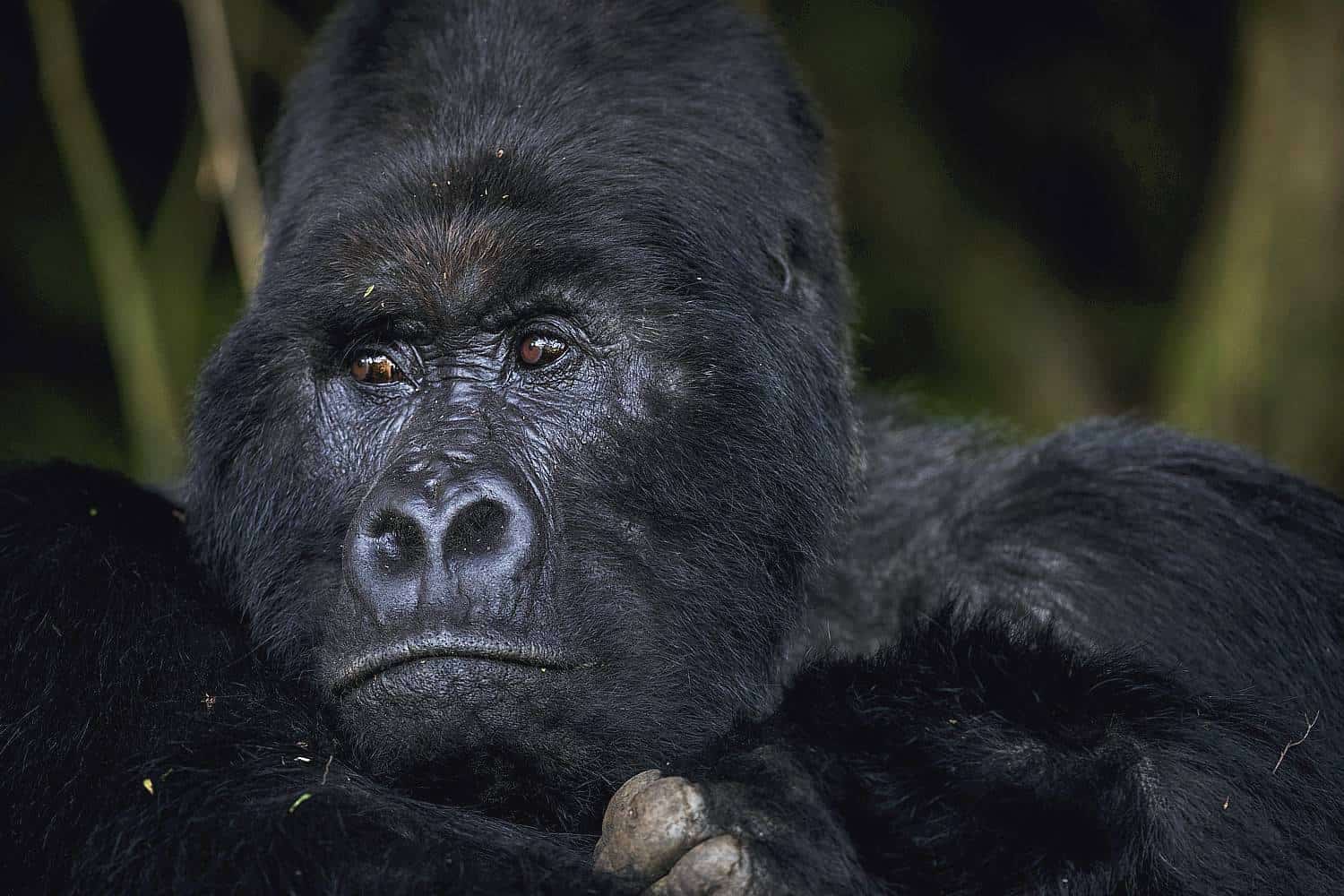 |
1. Mgahinga - The Primary Home Of The Magnificent Gorillas
Key Takeaways
- Most notable feature being the Nyakagezi family of 8 mountain gorillas that are previously known to roam the mountains in all three countries. Mount Gahinga in Uganda is their current home.
- Fabulous diversity of landscapes including swamplands, Afromontane forests, bamboo woodlands, and Afro-Alpine trees
- Silverbacks tolerant of each other and cohabiting peacefully which is a rare characteristic
One of the main attractions of Mgahinga is the possibility of enjoying a gorilla-viewing expedition under the supervision of an expert guide. The park has just one habituated gorilla group, the Nyakagezi family. An interesting feature of this group is that its silverbacks are unusually tolerant of each other, and as a result, there are multiple alpha males in the family. In all, the group has 8 members, including 3 silverbacks, 2 adult females, 1 juvenile male, and 2 infants.
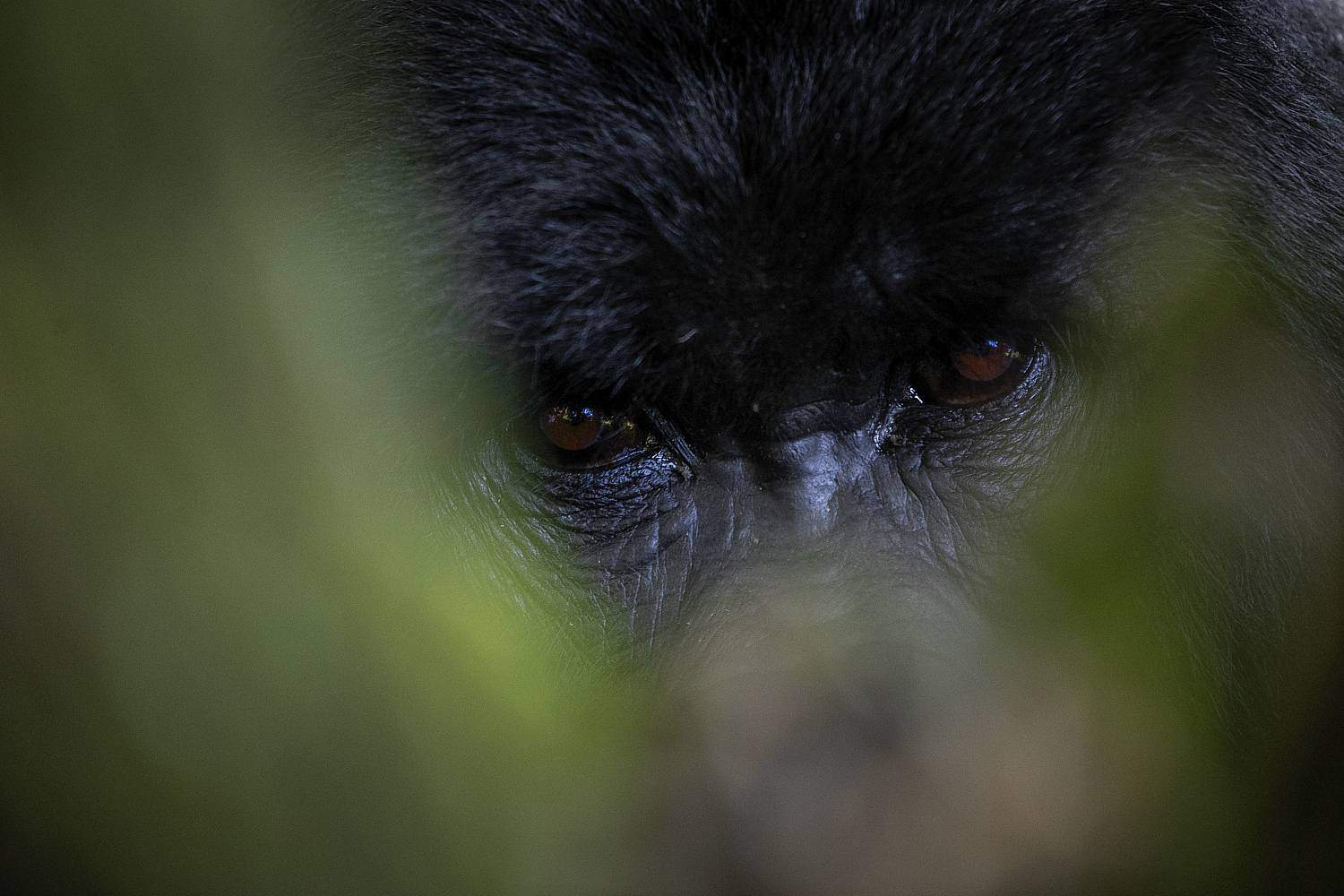 |
2. What Other Primates & Wildlife Exist In Mgahinga?
Key Takeaways
- Reserve hosting 40 to 60 individual golden monkeys habituated to the presence of humans
- Presence of 39 species of mammals including the forest elephant and Cape buffalo
- 115 species of birds exist in Mgahinga
In addition to the primates, you will also be able to see some 39 species of mammals here. Keep your eyes open for the forest elephant, buffalo, bushbuck, black-fronted duiker, and giant forest hog. Among the predators, there are leopards—spotted on very rare occasions in camera traps—and the golden cat, spotted hyena, side-striped jackal, and serval cat.
Birdwatching enthusiasts will especially enjoy holidaying in Mgahinga Gorilla National Park thanks to the 115 avian species that thrive here. You could spot species like the Rwenzori nightjar, paradise fly-catcher, yellow-vented bulbul, Pin-tailed whydah, Grey-capped warbler, waxbills, Rwenzori turaco, ibis, black kite, white-naped raven, and double-collared sunbird. The expert birding guide accompanying you may also help you identify the firefinch, speckled mousebird, stonechat, Rwenzori batis, and blue-headed coucal.
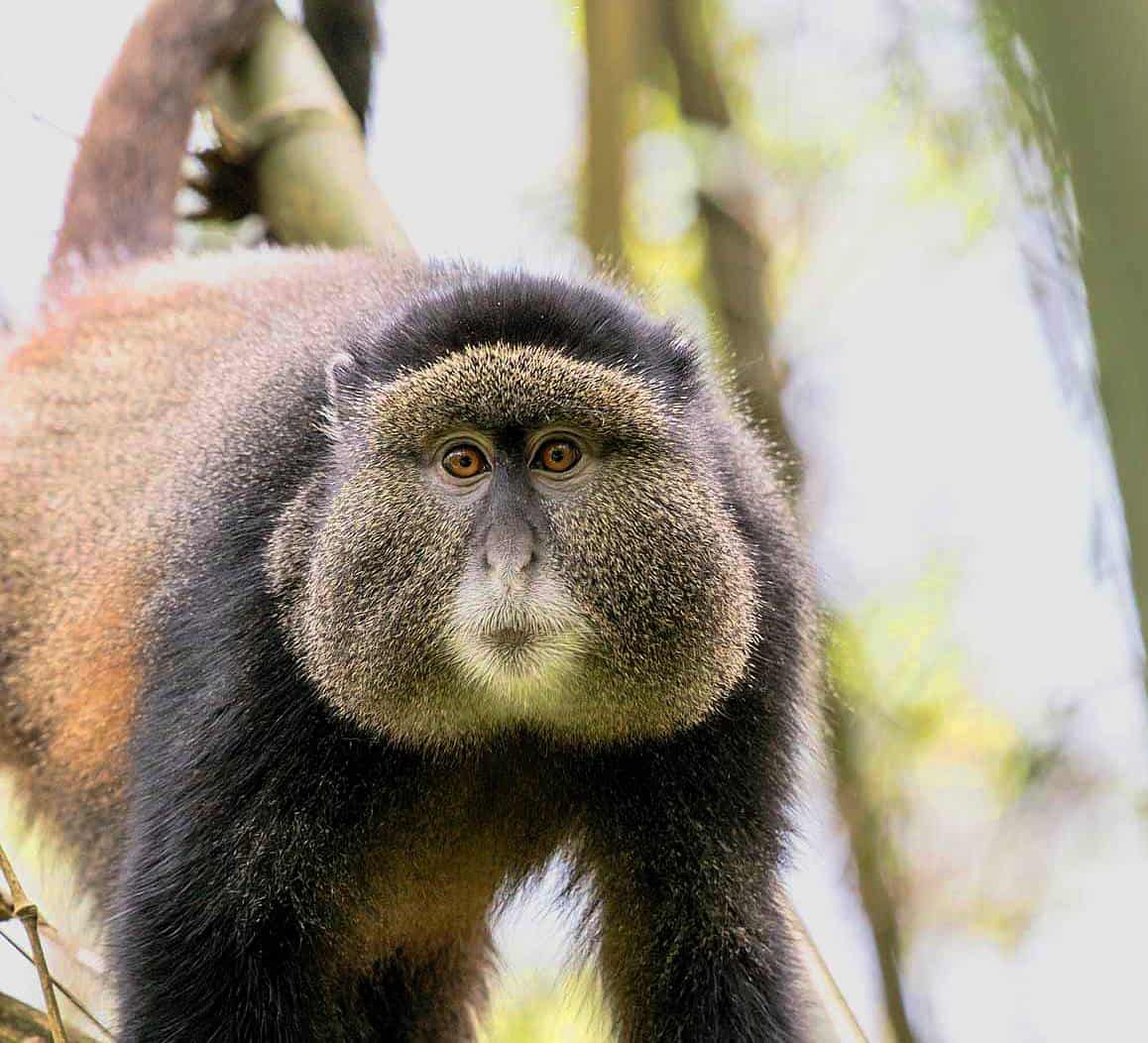 |
3. How To Plan Your Gorilla Trekking Experience In Mgahinga National Park?
Key Takeaways
- Immersive excursion of tracking the elusive mountain gorillas of Mgahinga taking up to 8 hours
- Forest hikes with sightings of beautiful flora, gorgeous birds, insects, reptiles, amphibians, and other smaller creatures in the undergrowth
- High probability of spotting the mountain gorillas that are habituated to the presence of humans
- Only one Nyakagezi family group found in the park
Given that gorilla sighting expeditions begin early in the morning, your tour consultant at AfricanMecca Safaris will recommend that you arrive at the park a day earlier and stay the night at a lodge (where to stay in Mgahinga). While there is about a 90% chance of locating the gorilla family, remember that they are wild animals. Although they are habituated to the presence of humans, they may display unexpected behavior and move to further sections of the park when looking for food.
Mgahinga Gorilla National Park hosts just one gorilla family – the Nyakagezi group. It’s known to wander in between the Virunga Mountains of Congo, Rwanda, and Uganda. Do keep in mind that your trek can take up 8 hours, during which time you’ll be navigating steep inclines in humid weather that can change without much warning. You will have the opportunity to track the blue monkey and the rare and endangered golden monkey (separate permit), which thrives in the bamboo forests of the reserve. If you’re planning to include a trek to see these elusive primates, you may want to consider a 3-day stay in Mgahinga Park.
A. How To Acquire Uganda Gorilla Permits For Mgahinga & Expected Prices?
Key Takeaways
- Visitors advised putting in a request for procuring the permit at the time of booking their trip
- Only 8 permits given out each day since there is just one gorilla family
- The minimum age for signing up for these excursions is 15 years
- The gorilla permit cost is US $800 per person - subject to change
We will book your permit on your behalf and make full payments for it. Please keep in mind the popularity of gorilla trekking expeditions in Mgahinga Gorilla Park during the peak season when availability of permit numbers are at its lowest. When you apply, you will be asked to provide complete personal details as noted on your passport. Be sure the information you send is accurate to avoid any confusion over errors. Furthermore, all trekkers must be over 15 years of age and in entirely good health to be allowed to participate in the safari holiday excursion, as mandated by the Ugandan authorities.
B. How To Pack For Your Mgahinga Gorilla Trekking Safari In Uganda?
Having the proper clothing and other essential supplies on your gorilla tracking tour will ensure that you enjoy your excursion in Mgahinga Gorilla National Park safely. Here are some of the recommended items to have along:- Long-sleeved shirts and long pants for protection against thorny bushes and bugs
- Sturdy all-terrain boots for navigating steep, slippery, and muddy inclines and trails
- Heavy-duty gardening gloves to protect your hands from brambles and nettle stings
- Waterproof jacket in case of unexpected showers
- Walking stick or pole
- Water or other hydrating beverages (1-2 liters per guest)
- Nourishing high-energy bars and other filling snacks, in case the trek is longer than expected
- Wide-brimmed hat and sunscreen; mosquito repellent and band-aids are also recommended
- Waterproof backpack to protect photographic equipment, food, and beverages from unexpected weather conditions in Mgahinga Gorilla Park
- Binoculars
- Camera with spare batteries and memory cards
- Extra cash to pay the porters who carry your bags and other equipment
C. How Fit Should You Be For Uganda Gorilla Trekking In Mgahinga?
Key Takeaways
- Each expedition is unique since accurately predicting the movements of the primates is not possible
- Treks may last anywhere from 30 minutes to 8 hours with the trail going over steep inclines
- Visitors advised acclimatizing on high altitude before arriving in Uganda
D. Protecting The Incredible Mountain Gorillas Of Mgahinga?
Key Takeaways
- Rules and regulations put in place by the Uganda Wildlife Authority
- Rules designed to protect the primates from contracting human illnesses since their DNA is 98% similar to humans, but have an underdeveloped immune system
- Gorillas are habituated, but humans requested to exercise caution when in their presence
E. Guidelines & Regulations to Follow When Tracking Down Gorillas In Mgahinga?
The gorillas found in Mgahinga Gorilla National Park are an incredible species – one of the last of their kind in Africa. The Ugandan authorities have visitor regulations for safari vacationers to protect the gorillas, while also allowing wildlife lovers the experience of viewing them. Here are some of the rules you must follow when in the company of the rare mountain gorillas:- Visitors must remain at a distance of 22 feet or 7 meters from the gorillas; if they start to approach, you must move away slowly
- Visitors under the age of 15 are not permitted to go gorilla tracking or on excursions to view the famed golden monkeys
- Each group of visitors can have a maximum of 8 guests
- Each group is allowed only 60 minutes in the presence of the primates
- If you have any kind of infection or are sick with a cold or flu, do not visit the gorillas – you could transmit the pathogens to them
- If you must cough or sneeze, cover your mouth and slowly move away from the gorillas
- Do not spit or leave trash in Mgahinga Gorilla Park
- Speak only in a low voice and do not make sudden movements that can scare the gorillas
- Before you begin your travel, your guide will train you on how to act if the gorillas vocalize or charge at you: lower your head in submission or look away and stay very still, indicating that you are submissive and don’t want confrontation nor want to fight
- Do not eat or drink while in the company of the gorillas
- Never make eye-contact with the primates as, in the gorilla world, the act signifies a challenge
F. Porter Assistance During Your Uganda Gorilla Trekking In Mgahinga
Key Takeaways
- Porters available to help visitors carry supplies, equipment, food, and beverages and also assist in navigating challenging trails
- Fees payable to porters is around $20 depending on the amount of gear carried
- Porters required to stop a short distance away from the animals since they are not given permits
- Opportunity to interact with the locals who reveal amazing information about the forest and folklore
- Each group assigned an experienced guide by the Uganda Wildlife Authority to accompany the excursion
The porters will help carry your gear and regale you with local lore and other tidbits of information about the wondrous primates you will see. If needed, they can also help by supporting you over the tough trails of Mgahinga Park. The porter fees are paid to the porters directly, and your contributions will help support the economy of the region. Typically, the fee is $20 for full porter services. Since the porters don’t have permits, they will stop a short distance away from the gorillas and request you to continue with only a few items that you absolutely need for the next 60 minutes.
G. Rules To Follow For Taking Gorilla Photographs & Videos In Mgahinga?
Key Takeaways
- Casual visitors allowed to bring DSLR or action video cameras to take pictures as mementos
- Fee applicable for professional photographing and filmmaking to take images and video shoots
- Visitors may find photography challenging because of the dim lighting and regulations against using the flash
H. When Does Gorilla Trekking Expedition Begin In Mgahinga?
Key Takeaways
- Trekkers required to arrive at the trailhead at 7:00 a.m. and bring all necessary supplies and documents
- An orientation session to instruct trekkers on what to expect during the hike
- Visitors only are allowed in the park between 7:00 a.m. and 7:00 p.m. and must return to the gate by 6:00 p.m.
Next, administrators will check your paperwork and verify your identity to confirm that you’re the legitimate owner of the permit. Once done, you will have a safari briefing and proceed for your trek in Mgahinga Gorilla Park by 8:30 a.m.
I. Your Mgahinga Gorilla Trekking Day - Truly A Life-Changing Opportunity
Key Takeaways
- An experienced guide and two rangers provided to each group of trekkers
- Expert ranger leaves ahead to scout around for the current location of the primates and relays the information back to basecamp
- The countdown for 60 minutes begins as soon as the primates are sighted
- Visitors may be asked to enact gorilla submissive behaviors in case of danger
- Watching primates climbing trees, napping, grooming babies, or feeding
- A life-changing experience that evokes respect for nature and educates visitors on the importance of conservation
If you’re not sure if you can endure a long trip in Mgahinga Gorilla Park, let your guide know in advance so he can make arrangements for a porter to carry your backpack, supplies, and any other equipment you have with you. The rangers will be carrying guns to keep you protected from dangers like irate forest elephants or charging gorillas, should you encounter them. However, such instances are extremely rare, and rangers only need to fire in the air to scare the animals away. Further, they are well-trained in instructing you to enact gorilla submissive behaviors where you can remain safe until the danger has passed
Traveling along the trails in Mgahinga Gorilla National Park is a magical experience. You will be walking along paths that your guide has just cleared for you using his machete. You will be pushing aside low-hanging branches and bushes or grasping them for support on the inclines. If you need a break, let the guide know so he can stop and give you time to sip on some water before you continue. Once you locate the gorilla family, the guide will begin the countdown to 60 minutes and signal to you to stop a safe distance from them. He may also clear away branches and bush so you can see them more clearly. Watch how they ignore you completely, seeing you as a part of the landscape of Mgahinga as they go about their usual activities.
Have a life-changing holiday experience as you watch these beautiful primates napping, climbing trees, caring for and grooming the babies, or chewing on their favorite food, bamboo shoots. You will be awestruck to see the size of the dominant silverback that stands well over 6 feet, gently handling the babies when they wander too far from the adults.
Take all the photographs on your safari to capture your moments in Mgahinga Gorilla National Park for eternity – but take care to turn off the flash and the camera sounds to avoid disturbing the primates. Your 60 minutes with them will be over all too soon, and it will be time to return to the park headquarters. Visitors often talk about how they are humbled and enchanted by the encounter and hope to come back someday for another trip.
You will no doubt come away convinced of the importance of conservation in Africa and the need to protect these incredible primates from extinction.
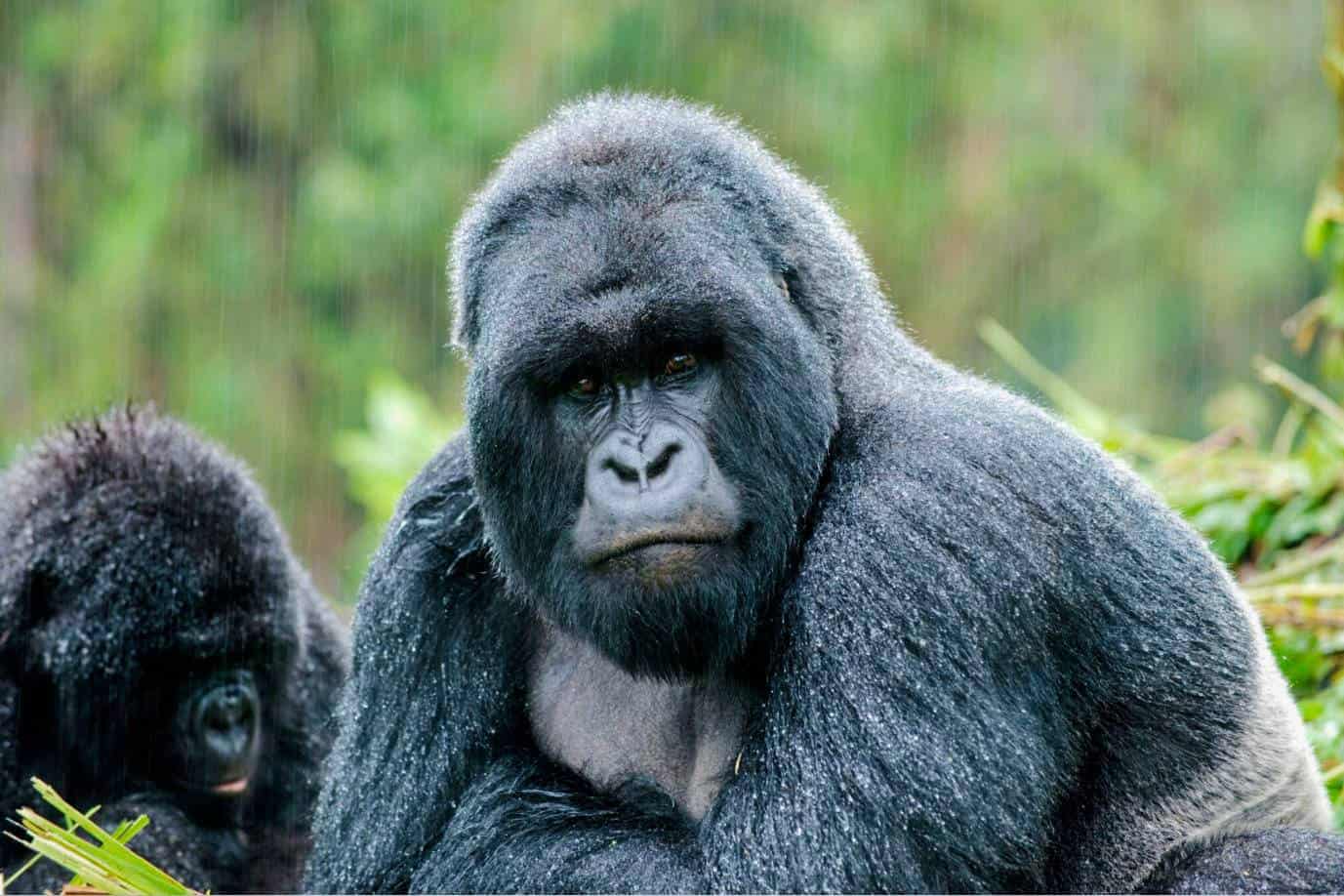 |
4. What Kind Of Flora (Vegetation) Exist In Mgahinga?
Key Takeaways
- Fabulous flora thanks to the diverse altitudes and climate conditions
- Afromontane woodlands on the lower slopes, bamboo forests higher up, and Hagenia-Hypericum zone on Mount Sabinyo
- Afro-Alpine belt on Mount Muhavura that showcases giant Lobelia and Senecio varieties
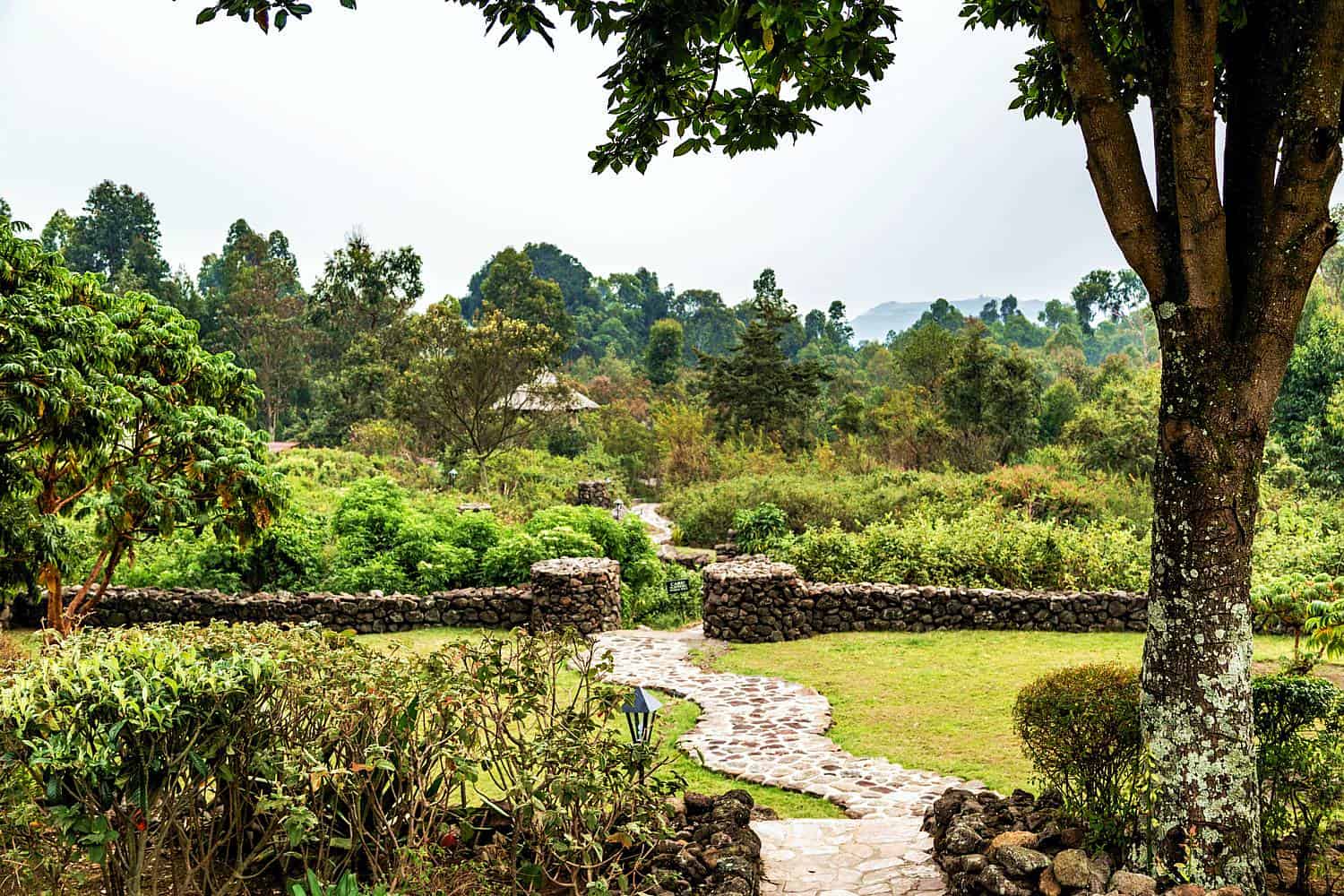 |
5. Brief History Of Mgahinga
Key Takeaways
- Established as a game reserve in the year 1930 under the British rule and gazetted in 1991
- Takes its name from the term for “piles of volcanic stones”
- Overseen by the Uganda Wildlife Authority and home to the Batwa Pygmies that have lived here for centuries
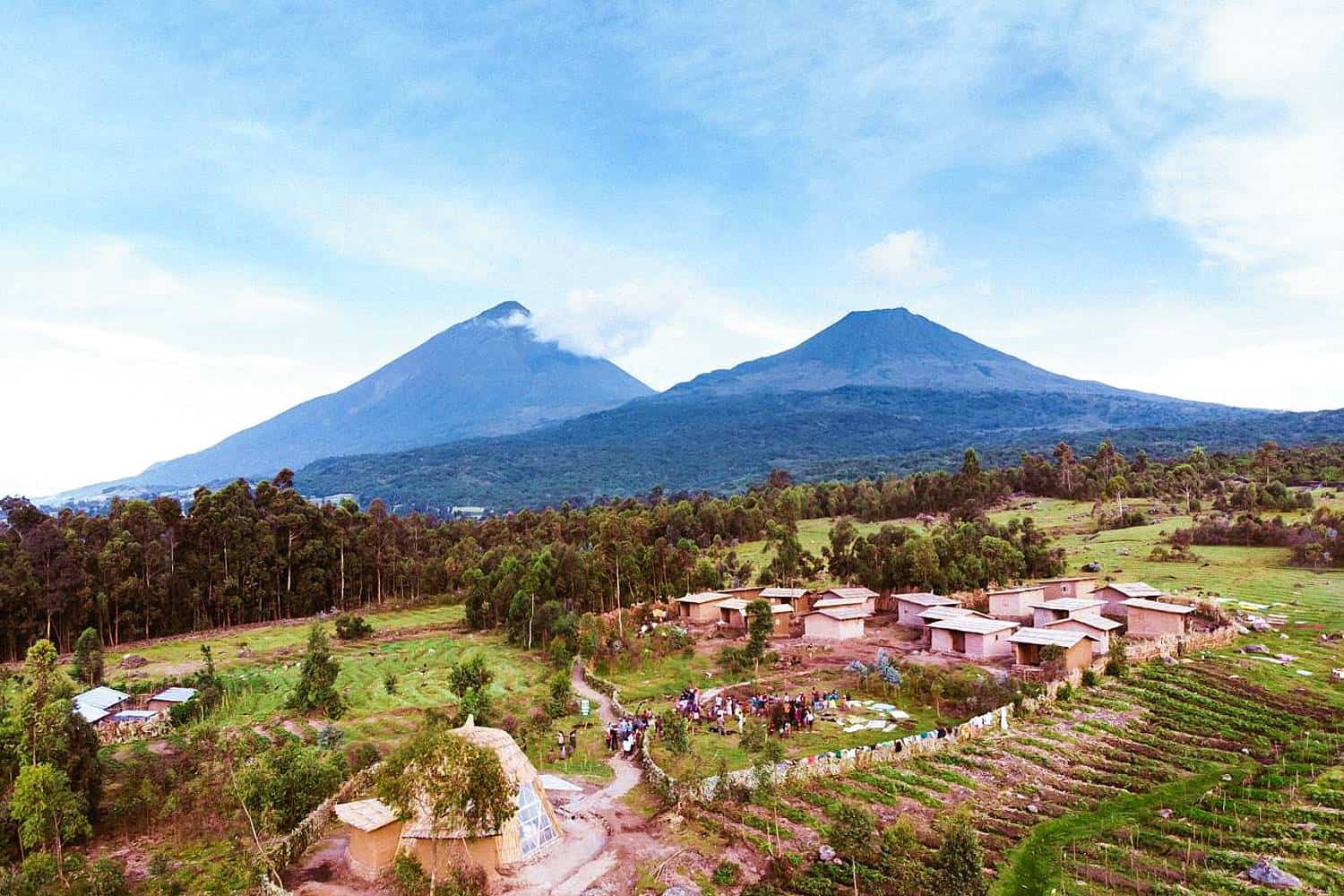 |
Select Our Highly Recommended & Unique Designed Uganda Safaris & Gorilla Treks That You Want To Tour Visit & Experience
What Gorilla Safari Attractions & Tour Activities To Experience During Your Mgahinga Visit?
Key Takeaways
- Excursions to track the Nyakagezi family of mountain gorillas
- Spotting the unique golden monkeys that live in the bamboo forests
- Spotting some of the 115 species of birdlife that thrives in the park
- Opportunity to interact with the Batwa Pygmy people known to live here for centuries
- Nature hiking treks to Sabinyo Gorge and Mgahinga swampy caldera
Tracking down the golden monkeys of Mgahinga Gorilla National Park is comparatively easier, since there are 40 to 60 individuals in the park that are habituated to human presence. As you follow the bamboo forest trails on your way to locating the primates, you will have the opportunity to view some of the incredible 115 species of avian life that live in the region. The expert guides accompanying you will help identify some of the species you see. And, should you have a chance to vacation tour in the park during the months between November and April, you should be able to spot some of the migratory birds that visit Mgahinga seasonally.
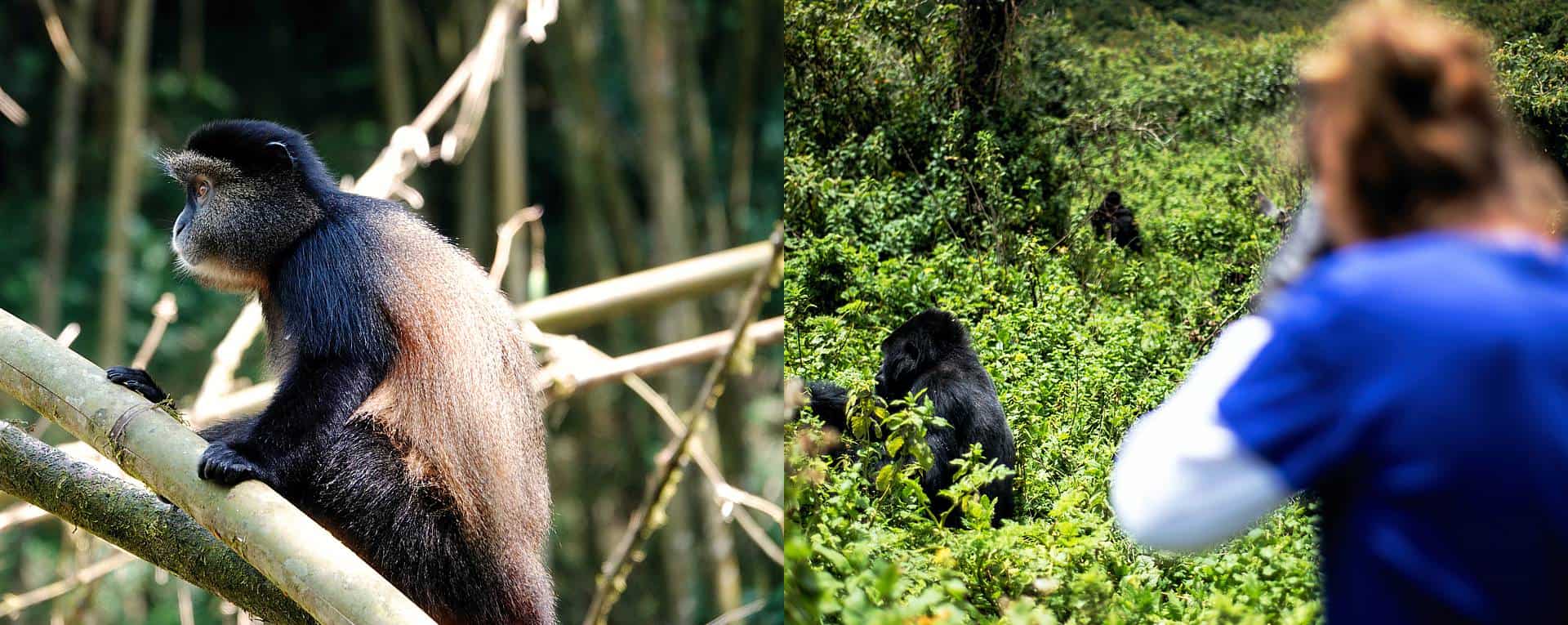 |
Mgahinga Gorilla National Park has a stunningly beautiful landscape dominated by three extinct volcanoes in each neighbouring country: Mount Gahinga (Uganda), Mount Sabinyo (Rwanda), and Mount Muhavura (Congo). The slopes of these cones host a thriving biome containing an incredible variety of flora. You can choose to go on hiking tours on the slopes to revel in their natural beauty and, perhaps, enjoy a breathtaking vista from the peak. Each of these cones has something unique to offer.
For instance, Muhavura has a gorgeous crater lake at the top, while the marshlands on the crest of Mgahinga enthrall you with their scenic beauty. Scale Sabinyo and you’ll be treated to fabulous panoramas that make the effort totally worthwhile. However, this mountain has more to offer. If you are on a birdwatching safari vacation, you can’t miss exploring Sabinyo Gorge, a depression on the side of the mountain that is home to a stunning array of avian life. Also, plan an expedition to the Kisozi Caldera and Uganda-Congo Border Trail, which offers the possibility of scaling the Gisozi hill for superb 360-degree panoramas that extend all the way into the Democratic Republic of Congo.
Watch Video On Mgahinga Gorilla Safari Experiences
Our Top 6 Safari Activities In Mgahinga - Things You Can Do & See
Activities Content - Start Here
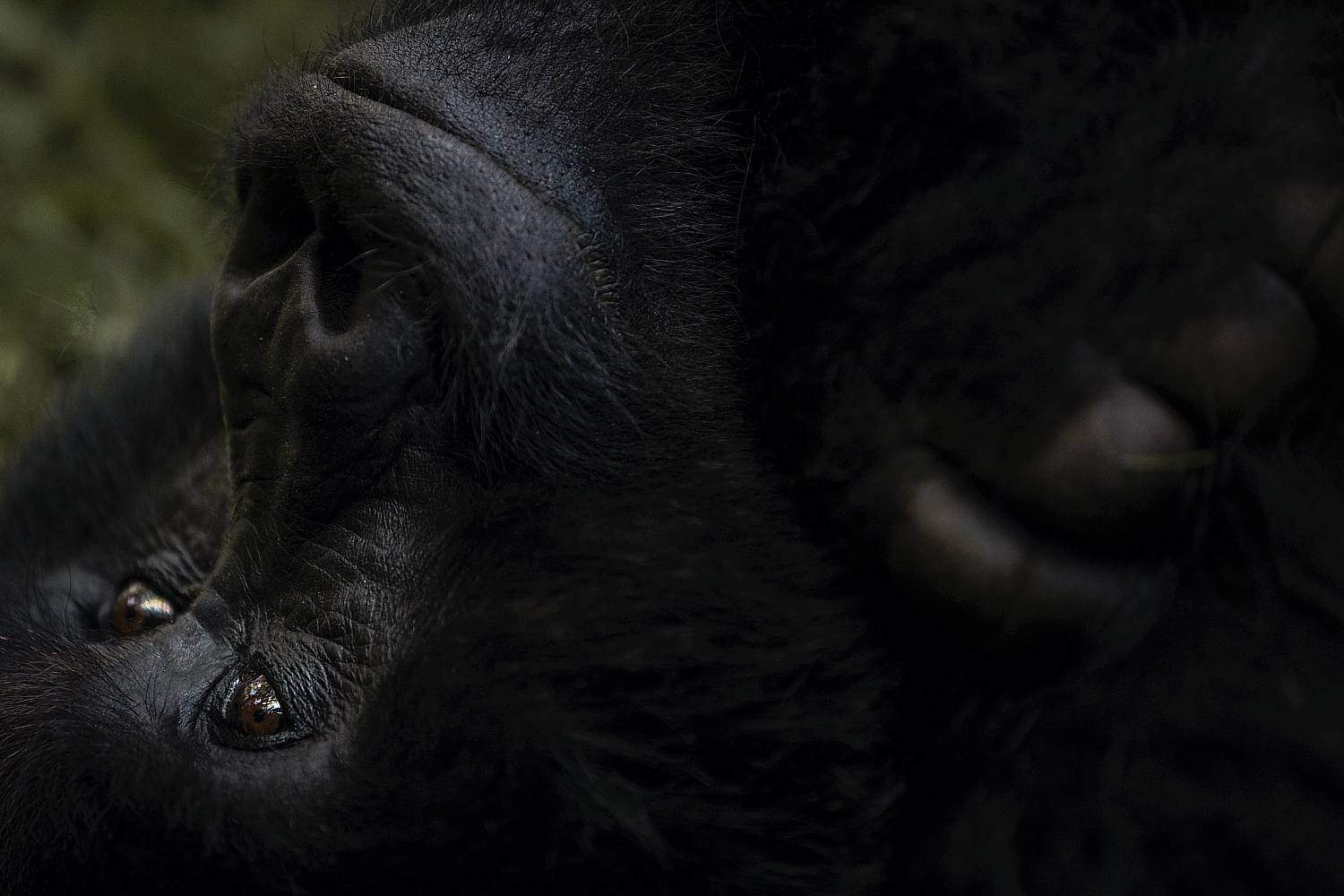 |
1. Gorilla Trekking Safari – The Highlight Of Your Mgahinga Tour In Uganda
Key Takeaways
- Virunga Conservation Area spanning three countries and the last habitat for the rare mountain gorillas
- Reserve home to the Nyakagezi gorilla family that prefers the lush rainforest
- Wide range of tree and plant species that provide ample nutritional nourishment to the primates
How Does The Trek Progress At Mgahinga?
Key Takeaways
- Each gorilla-tracking expedition may last for 6 to 8 hours depending on their location
- Following trails abounding with small mammals and gorgeous birds
- Opportunity to spot indigenous insects, amphibians, reptiles, and other creatures
Spending Time With The Gorilla Family In Mgahinga
Key Takeaways
- Each excursion begins at 7 a.m. at the Ntebeko Gate of the park
- Opportunity to spend 60 minutes in the company of the primates observing their activities
- Visitors required to remain at a distance of 7 meters or 22 feet from the primates to protect them from human diseases
Some Information About The Nyakagezi Family
Key Takeaways
- Dominant silverback, Mark who is supported by Ndugutse in caring for the family - total 8 members
- Habituation process starting in 1991
- The family officially opened to visitors in the year 1994 after the completion of the habituation
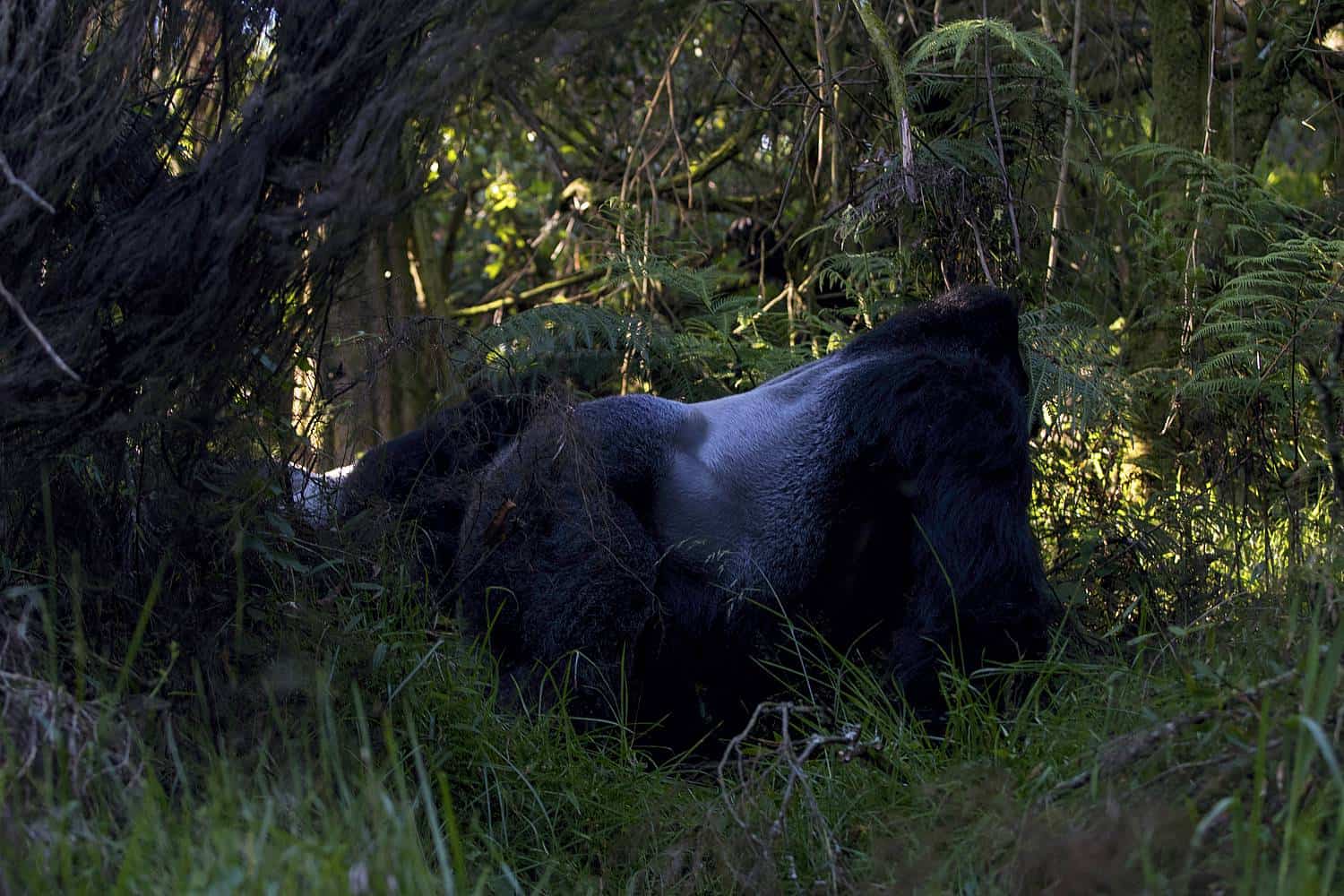 |
2. Birdwatching Tours In Mgahinga Forest
Key Takeaways
- Reserve home to a stunning 115 species of birdlife of which 14 are native to the Albertine Rift Valley, and 39 are indigenous Afrotropical mountain varieties
- Best season to spot migratory birds is in the months from November to April when many species arrive from the northern hemisphere to spend the winters
- Indigenous species may nest during the months from March to mid-May during the short wet season when food is plentiful
The long and short wet rainy seasons of April to early May and October to early November respectively is also a very good time to visit Mgahinga Park for your birding safari in Uganda. Although you may find that the rains make navigating the roads and forest pathways more time-consuming, bird watching is at its finest. Most species nest during the months of May and June, since food is most plentiful from May through September i.e. after the rains. But if you hope to spot migratory birds, you may want to take your trip between November and April, when northern species spend time in these warmer climes.
The bird species present in Mgahinga include the white-necked raven, Pin-tailed whydah, speckled mousebird, firefinch stonechat, waxbills, archer’s robin-chat, dusky crimson wing, olive pigeon, Ruwenzori nightjar, and black kite. Also, look for the double-collared sunbird, paradise flycatcher, yellow-vented bulbul, Rwenzori batis, grey capped warbler, Alpine chat, ibis, blue-headed coucal, olive woodpecker, Kivu ground-thrush, and Ruwenzori turaco.
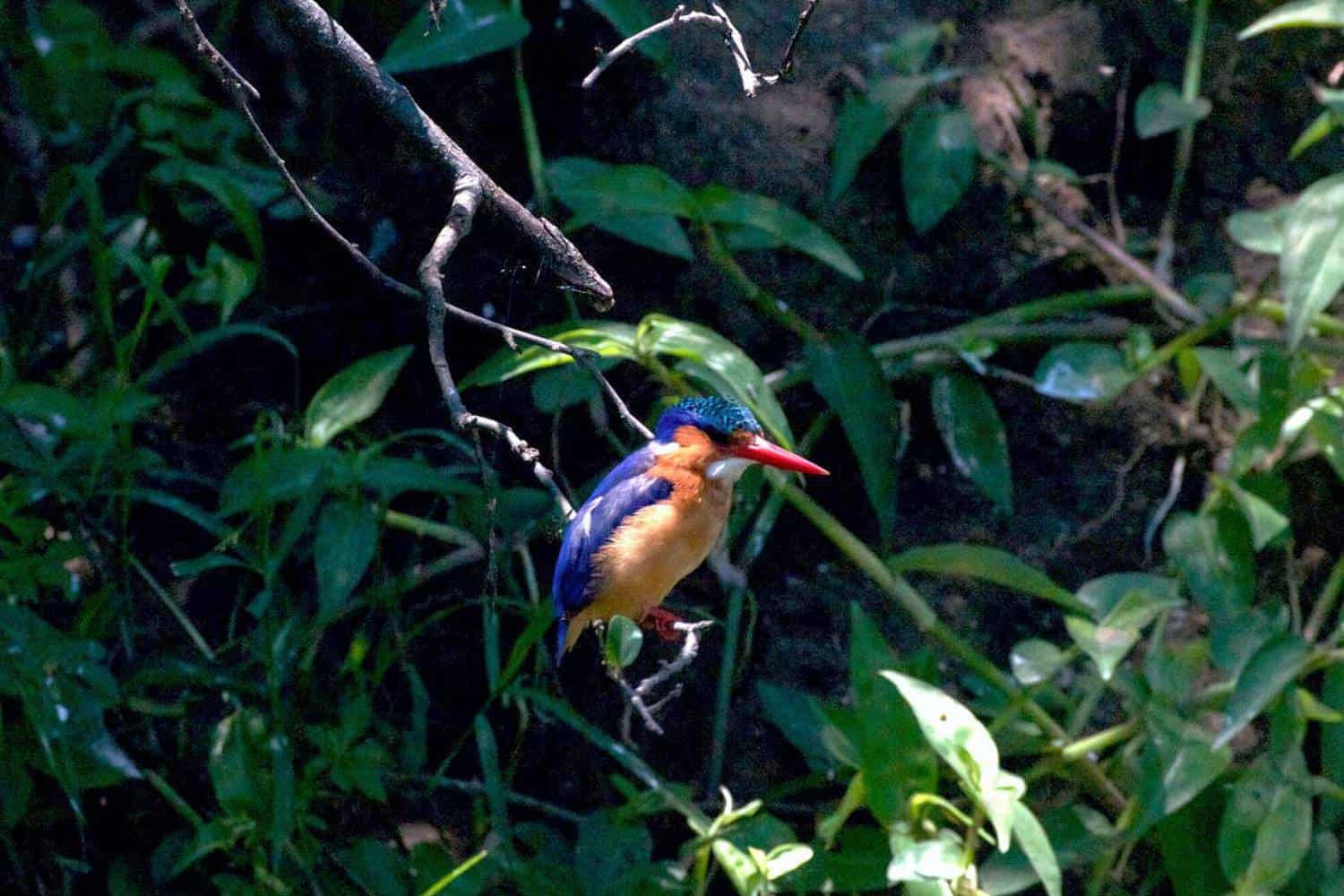 |
3. The Unique Hiking Trails Of Mgahinga Park
Key Takeaways
- Hiking to the Garama Caves for an understanding of the ancient military strategies used by the Batwa people
- Traveling to the valleys that abound with an amazing diversity of flora, trees, and plants
- Scaling Mount Gahinga for fabulous views of the surrounding landscape with the Democratic of Congo in the distance
Sabinyo Gorge Hike
Key Takeaways
- Hiking to Sabinyo Gorge which is a deep vale carved into the side of Mount Gahinga
- Trek taking five to six hours through bamboo forests over clear pathways and bridges
- Rugezi Swamp well-known for a stunning variety of avian life
- Reveling in the vistas of the Virunga Volcanoes, and other sights
- Visitors requested to come prepared with proper hiking supplies, food, and beverages
The Sabinyo Gorge trail is somewhat taxing but rewards your efforts with breathtaking views of the Bwindi Forest, Virunga volcanoes, and other forest panoramas. As the expert safari consultant at AfricanMecca will advise, you will want to wear proper hiking clothing and footwear, and bring along plenty of drinking water and fortifying snacks to keep up your energy levels.
Hike To The Kisozi Caldera
Key Takeaways
- A short, moderately strenuous hike to Kisozi Caldera
- Reveling in the fabulous views from the top of the small elevation
- Accessible with a hike over just one kilometer
Trek To The Uganda-Congo Border
Key Takeaways
- Trekking to the border between Uganda and the Democratic Republic of Congo
- A moderately taxing hike that takes about 5 hours to complete
- Traveling through various vegetation zones and sighting small animals and perhaps, a forest elephant
Walk Inside The Legendary Garama Cave
Key Takeaways
- Trekking to the Garama Caves which are located at a distance of 3 kilometers from the park headquarters at Ntebeko
- Caves extending to 342 meters and running 14 meters below a plateau that was once covered with lush forests
- Considered sacred by the Batwa people and used for holding war councils by the tribe’s elders
- Opportunity to learn about the cultural history of the Batwa and their traditional arts and crafts
- Sighting the current inhabitants of the caves, a colony of bats
The Garama Cave walk is an immersive and experiential experience where you will learn about the historic culture of the Mgahinga region and how the Batwa lived before being evicted from the park. Learn some of their secrets for making medicines from herbs, making fire, collecting water using bamboo pipes, smoking pipes, and conflict strategies. You may also get the opportunity to meet the current inhabitants of the cave—a colony of bats—before emerging again into the sunlight. End your safari vacation excursion by participating in a cultural dance performance performed by some of the local artists.
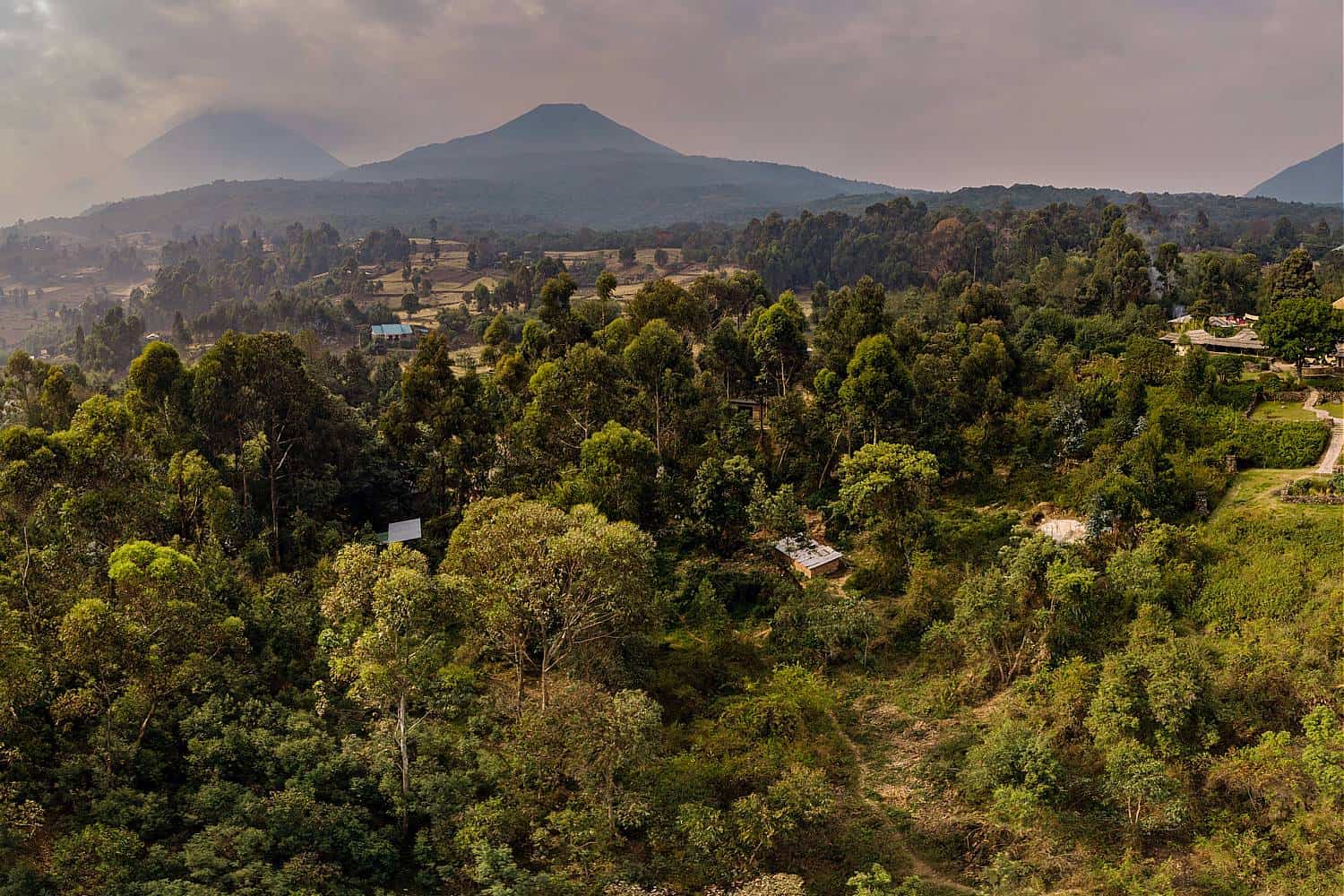 |
4. Batwa Cultural Trails & Tour Visits To Tribal Communities In Mgahinga
Key Takeaways
- Opportunity to meet the Batwa Pygmy people who have lived in the mountains since before written history
- Traditionally have a deep respect for the forest and have lived a hunter-gatherer lifestyle for centuries
- Known to be a hardy warrior clan having earned the title, “keepers of the forest”
Keepers Of The Forest - The Batwa
Key Takeaways
- Followed eco-friendly principles since centuries with a lifestyle having a minimum impact on the forest
- Collected fruit, hunted small animals, and lived in temporary shelters made with branches and leaves
- Forced to move out of the forest after the reserve was given the gazetted status
The Batwa Today
Key Takeaways
- Setbacks faced by the community because of the loss of access to traditional sources of livelihood
- Efforts in progress to rehabilitate them by offering alternate means of securing a living
- 10 acres of land allocated for their homes and farming
- Around 18 Batwa families comprising about 100 individuals displaced
- Opportunity to visit their villages and learn about sustainable methods of living using the forest resources
Mount Gahinga Lodge via Volcanoes Safaris Partnership Trust (VSPT) is also helping to uplift the community by building homes on 10 acres of land just outside the reserve. Some of this land will be allocated for farming purposes also. Once the permanent structures in this village are ready, 18 Batwa families comprising about 100 individuals will be able to move out of the tiny rocky area at Musasa that they had occupied since their eviction from the park.
The Batwa people have retained their culture and knowledge of the natural environment and its wildlife, despite their departure from ancestral lands in the park. On your visit to Mgahinga Gorilla National Park, you can take a side trip to their village to better understand how they have long lived off natural resources without leaving an impact. You can learn how to harvest natural honey, make medicines from plants, collect edible berries, roots, fruits, and leaves, make utensils from bamboo, and much more.
Exploring The Batwa Way Of Living
Key Takeaways
- Taking village walks to participate in their music and dance performances
- All proceeds from purchases of handicrafts or hiring guides for gorilla-tracking used for community upliftment
- Batwa Vocational School established to train tribals in the skills that can help them earn a livelihood
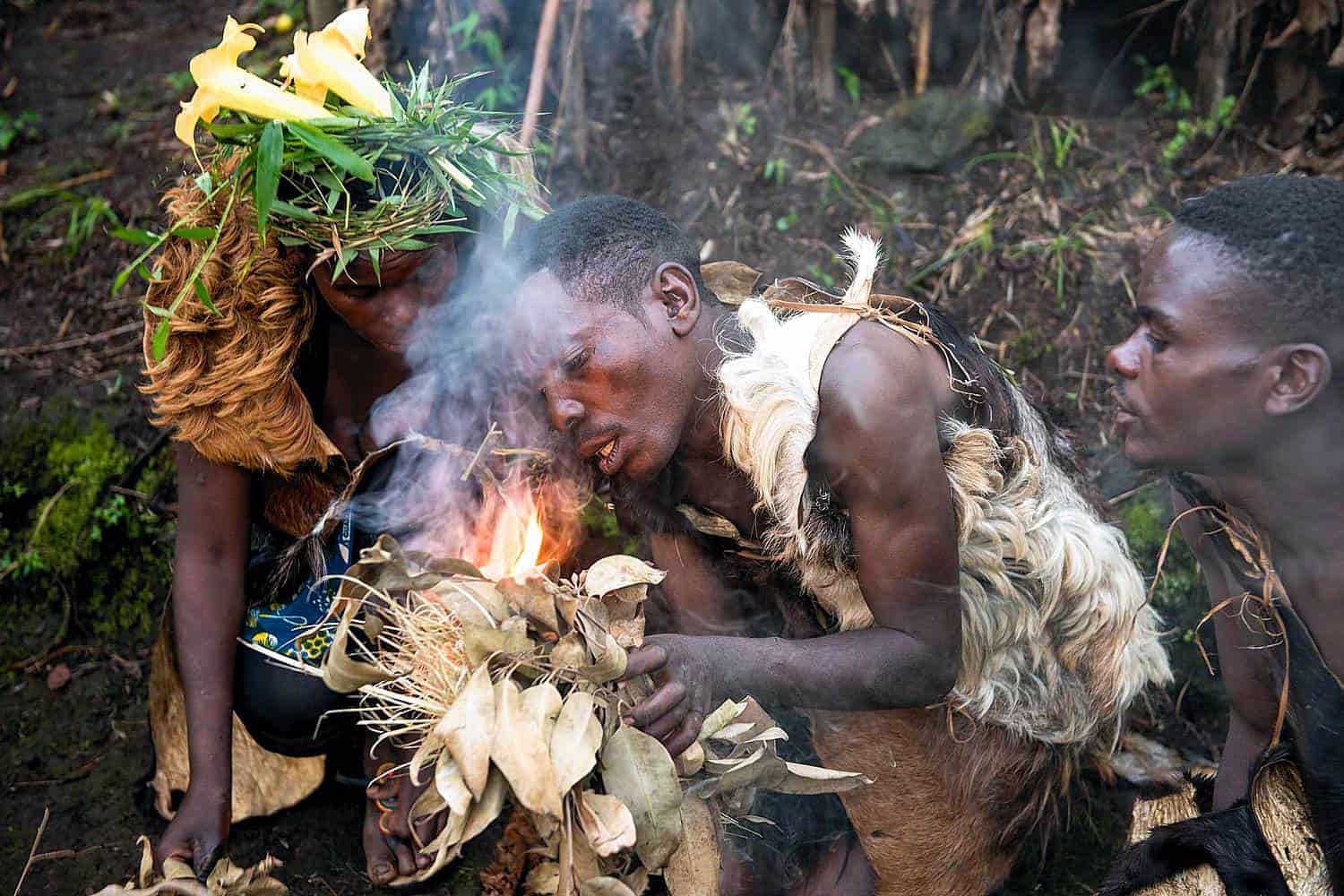 |
5. Climb The Extinct Virunga Volcanoes Of Mgahinga Park
Key Takeaways
- Region famous for the incredible beauty of the extinct volcanoes, Mount Gahinga, Mount Muhavura, and Mount Sabinyo
- Full-day hikes starting at 7 a.m. with a drive to the foot of the mountain
- Choice of hiking trails according to individual fitness levels
Mount Sabyinyo - 3669 Meters
Key Takeaways
- Called “Old Man’s Teeth” by the locals because of the serrated tips eroded over time
- Opportunity to scale any of the three peaks of the cone
- Treks can take around eight hours to complete over a distance of 14 kilometers
- Porters available to help climbers carry gear and other supplies
- Climb rewarded by 360-degree panoramic views of Rwanda, Uganda, and the Democratic Republic of Congo
Once you arrive at the apex, the breathtaking 360-degree panoramas reaching into three nations—Rwanda, Uganda, and the Democratic Republic of Congo—make the effort every bit worth it. You can expect the trip to take eight hours or more, and to cover a distance of 14 kilometers. Make sure to bring at least two to three liters of water to keep your body hydrated, and wear altitude clothing that covers you completely for protection from the cool and damp environs of the mountain. Porters are also available to assist you by carrying your equipment for this vacation excursion.
Mount Gahinga - 3474 Meters
Key Takeaways
- Takes its name from the term for “piles of volcanic stones”
- Trek up the inclines of the mountain takes around 6 to 7 hours and takes you to a marshland that was once a beautiful lake
- An 8-kilometer hike that meanders through farmlands, bamboo and montane forests, and other vegetation
Mount Muhavura - 4127 Meters
Key Takeaways
- Overnight excursion requiring hikers to arrive at the base in the evening and start the ascent in the early morning
- The complete trek may take 8 to 10 hours covering a distance of 12 kilometers
- Porters available to carry camping equipment, food, beverages, and other supplies
- The tallest peak in the reserve having a conical shape and visible from a distance
- Scenic vistas of Queen Elizabeth Park, Lake Edward, and Virunga Volcanic Massif
Being the tallest mountain of Virungas, Muhavura is also called “the Guide” because its conical shape is clearly visible from a distance. Most of the trail takes you through rocky expanses, with most of the vegetation comprising small bushes and grasses. At the top, you will be enthralled by magnificent views of Queen Elizabeth Park, Lake Edward, and other parts of the Virunga Volcanic Massif. On a clear day, you might even see the Rwenzori Mountains towering in the distance.
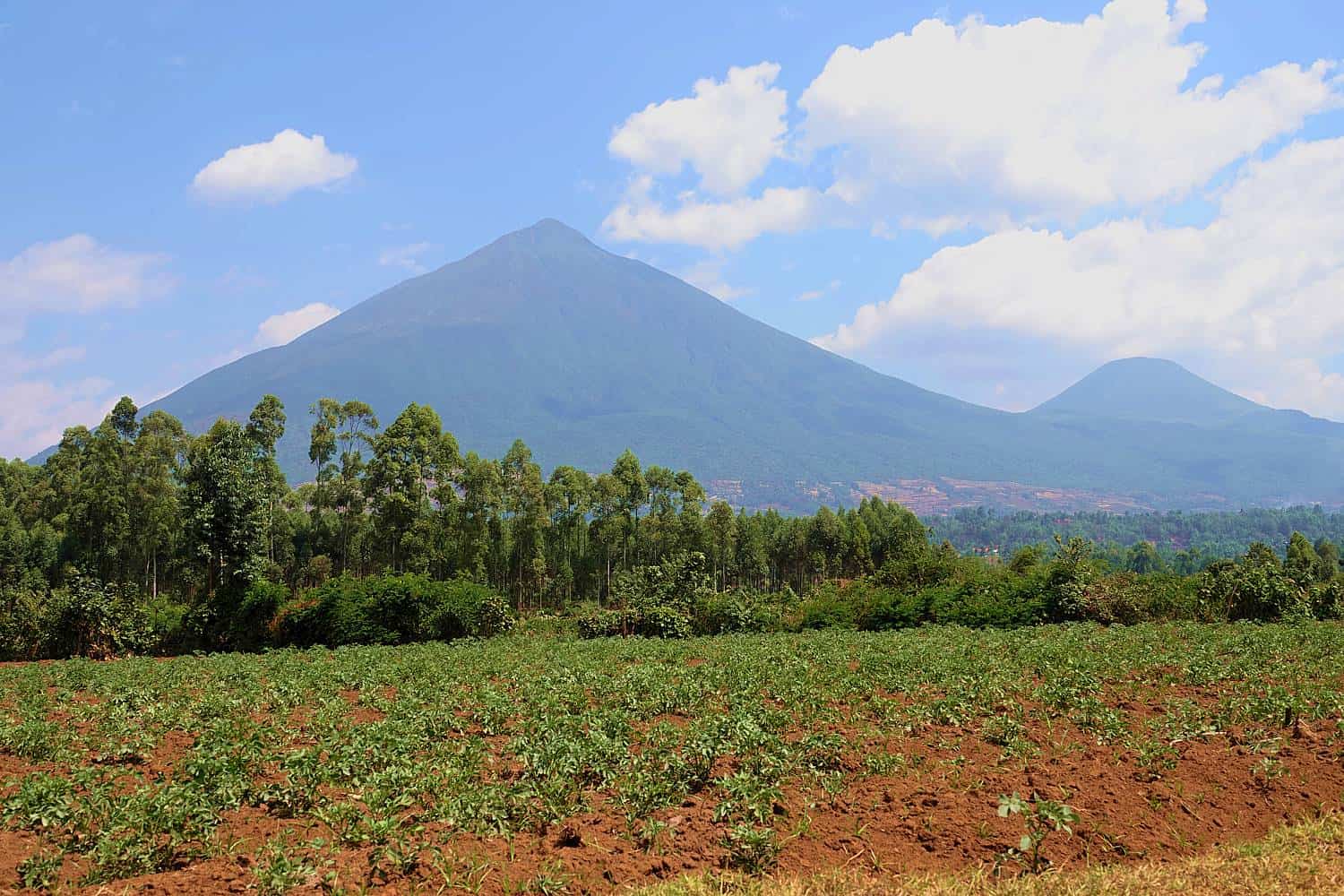 |
6. Trekking to See The Endangered Golden Monkeys Of Mgahinga
Key Takeaways
- Hiking to see the golden monkeys declared as endangered by the World Conservation Union
- Species featuring brilliant colors of black, orange, and gold
- Last surviving numbers thriving in the bamboo forests of the Virunga Volcanoes
Where To Locate The Golden Monkeys Of Mgahinga?
Key Takeaways
- Most commonly found in the higher reaches of the forest canopy where they are safe from eagles
- Not common to be found on the forest floors and prefer to remain in specific areas of the bamboo forests
- Non-nomadic in behavior and do not build nests
The Diminishing Habitats Of Mgahinga’s Golden Primates
Key Takeaways
- Only 4,000 to 5,000 individuals left in the world, mainly found only in Mount Gahinga reserve
- Group of 40 to 60 members habituated to the presence of humans
- Opportunities to see spoor and droppings of other wildlife
There have been reports of possible sightings of the golden monkeys in the Nyungwe Forest National Park in Rwanda. When hiking along trails hoping to sight primates, and if lucky, you will also have the opportunity to spot some of the other mammals that call Mgahinga home, or at least their spoor and droppings. Look out for forest elephants, Cape buffalos, duikers, giant forest hogs, porcupines and various others, along with an array of amphibians, reptiles, and birds.
Tracking Down The Mgahinga Golden Monkeys
Key Takeaways
- Request tour consultants at AfricanMecca to procure the mandatory permit ahead of arrival at the reserve
- Each permit costing US $60 and allowing a single visitor aged 12 years and above
- Hikers required to arrive at the base camp at 7:30 a.m. after which a half-hour orientation session is held
- Hikes undertaken twice a day, in the morning or evening with each trip taking around 4 hours
- Opportunity to spend 60 minutes observing the primates and their activities
Tracking the golden monkeys in the Mgahinga is not a particularly taxing experience since the primates live on the lower inclines of the mountain - around 3-4 km hike. Once you locate the habituated family, you can spend 60 minutes in their presence, observing their activities and taking pictures. Unlike gorilla tracking excursions, children as young as 12 years are allowed to visit the golden monkeys. You will also enjoy the natural beauty of the park, with its lush gorges, moors and heaths covered with low bushes, shrubs, and bracken.
Spending Time With The Golden Monkeys Of Mgahinga
Key Takeaways
- Choice of signing up for the tracking activity or habituation experience, each of which is a unique excursion
- Weather conditions and locations of the primates can make the expeditions unpredictable
- Preferred habitat is 2500 meters above sea level and shrouded in mist making sightings challenging
The preferred habitat of the golden monkeys is at 2500 meters above sea level, which means you may encounter strong winds and cold, damp weather. Although the moisture appears mainly as mist—which adds to the stunning beauty of Mgahinga—it hampers primate sightings. The monkeys take shelter from the rain and cold in the forest canopy and stay still and quiet in the cover, making it challenging to spot them.
The Golden Monkey Habituation Experience In Mgahinga
Key Takeaways
- Participation in the Golden Monkey Habituation Experience where a research guide spend time studying the primates
- Each excursion lasting for 4 hours with the permit costing US$ 100
- Opportunity to watch diverse behaviors of golden monkeys
 |
Select Our Highly Recommended & Unique Designed Uganda Safaris & Gorilla Treks That You Want To Tour Visit & Experience
|
Mgahinga Park Rating By AfricanMecca
4
Star
Wildlife Exclusivity Activities Accommodations Authenticity
Users
(0 votes)
0
|
Learn More On AfricanMecca Safari Tier Ratings & Experiences |
Write A Trip Review On Mgahinga In Uganda
Read More +
WHERE & BEST PLACES TO STAY IN MGAHINGA
Mgahinga only has one proper tourist accommodation that AfricanMecca Safaris can recommend i.e. Mount Gahinga Lodge which offers a deluxe, rustic ambiance with just 8 rondavel-style banda rooms.
Read More +
MGAHINGA SAFARI ACTIVITIES & TOUR ATTRACTIONS
The primary two activities at Mgahinga Park are gorilla trekking and golden monkeys experience. Other tours are birdwatching excursions, gorge and caldera hikes, Batwa cultural trail, climb Virunga Volcanoes etc.
Read More +
BEST TIME TO VISIT MGAHINGA
The long dry season in Mgahinga is the best time to visit and starts in June to August. The short dry season occurs in the months of January and February, and is again a very good time for gorilla safaris.
Read More +
GORILLA FAMILY GROUPS IN MGAHINGA
Should you plan a gorilla viewing safari to Mgahinga Gorilla National Park, you will learn that the park has only one resident gorilla family that is habituated to the presence of humans.
AFRICANMECCA REVIEWS
What are our Customers saying about us? READ MORE REVIEWS
AfricanMecca Safaris offers incredibly knowledgeable and skilled services! Our travel arrangements for 2 months of volunteering with TEACH Rwanda in country were made quickly and economically. Honored to work with Raza!
Janet Brown - TEACH Rwanda Founder - United States
I just returned from a month in Africa, specifically Rwanda & Kenya. I am left breathless with my experience. AfricanMecca Safaris coordinated the entire trip for me and left no detail, nothing for me to do.
Carol Bobb - Pennsylvania, United States
AfricanMecca Safaris created a remarkable honeymoon tailored to our interests and desires. The quality of service and delivery of experience was unsurpassed. I highly recommend AfricanMecca Safaris to honeymooners, families, or any traveler.
Noorin & Jason Nelson - Maryland, United States
I booked my safari holiday through AfricanMecca. They were the most helpful company I have ever dealt with and I work within the travel industry. I had the most amazing time. The holiday went as clockwork with no hitches anywhere.
Shelley Roberts - Hemel Hempstead, United Kingdom
This is to let you know my guests, The Bryant's, had a wonderful time on the trip Samburu, Masai Mara/Kenya, Chobe/Botswana & Victoria Falls/Zambia. Everything was perfect! Thank you.
Christine Milan - MT Carmel Travel - Connecticut, United States
We have returned from our African adventure and would like to thank you very much for your part in making this such a wonderful experience. We were lucky enough to time the Great Migration from the Serengeti, which was amazing.
Denise Paterson - Belmont, Australia
Rwanda was amazing. The accommodations, food, and guides AfricanMecca arranged were great. Raza also helped us through the complicated process of getting permits for gorilla trekking. AfricanMecca is a fantastic company to work with.
Stephanie Weir - United States
EAST AFRICA SAFARI BOOKING TRIP IDEA FOR MGAHINGA IN UGANDA
When visiting Mgahinga Park for your gorilla safari trek, we recommend combining it with Queen Elizabeth, Murchison Falls, and Kibale (chimpanzee safari) alongside your city tour visits of Kampala and Entebbe.
You may optionally extend out to other wilderness areas such as Bwindi to track down gorillas in a different park, Jinja for whitewater rafting on the Nile River, and Semliki, Lake Mburo or Kidepo for an offbeat wildlife tour.
You can end your vacation on the beach at Lake Victoria or even extending out to the exotic spice island of Zanzibar or Lamu, or even Mombasa.
Best Safari Planning Ideas & Trip Experiences For Uganda
Below are guide references on how to plan each of the below safari experience in Uganda. Alternatively, go to the summary section for a quick overview of each trip planning experience.1. How To Plan Uganda Safari Trips? (Summary)
2. Wildlife Safari Trip Planning Guide For Uganda
3. Private & Tailor-Made Safaris Trip Planning Guide For Uganda
4. Honeymoon Safaris Trip Planning Guide For Uganda
5. Family Safaris Trip Planning Guide For Uganda
6. Luxury Safaris Trip Planning Guide For Uganda
7. Photo Safaris Trip Planning Guide For Uganda
8. Cultural Safaris Trip Planning Guide For Uganda
9. Gorilla, Chimpanzee & Primate Safaris Trip Planning Guide For Uganda
10. Hike, Trek & Bush Walk Safaris Trip Planning Guide For Uganda
11. Birding Safaris Trip Planning Guide For Uganda
12. Wedding Safaris Trip Planning Guide For Uganda
READ MOREKickstart Your Safari Planning
ARE YOU PLANNING TO BOOK AN AFRICAN SAFARI TO MGAHINGA IN UGANDA?
Do You Need Knowledgeable, Experienced & Specialist Guidance For Your Travels In Mgahinga ? Let Us Help Plan Your Trip Itinerary Correctly
CONTACT AN AFRICA TRAVEL EXPERT ON MGAHINGA GORILLA NATIONAL PARKEXPLORE MORE ON MGAHINGA GORILLA NATIONAL PARK IN UGANDA
HAVE YOU VISITED MGAHINGA FOR AN AFRICA SAFARI IN UGANDA?
Write A Travel Or Tourist Trip Review To Share Your Experiences
WRITE MGAHINGA REVIEWAMS BLOG
VIEW ALL -- 24 December 2024 by AfricanMecca Safaris, in Blog For AfricanMecca Safaris,Safari Planning Blog Posts - AfricanMecca Safaris
What AfricanMecca Accomplished In 2024
What AfricanMecca Accomplished In 2024 Published By AfricanMecca Safaris | Blog ...READ MORE + - 26 October 2017 by AfricanMecca Safaris, in Blog For AfricanMecca Safaris,Safari Planning Blog Posts - AfricanMecca Safaris
Baggage Guidance & Restrictions On Flying Safaris In Africa
Baggage Guidance & Restrictions On Flying Safaris In Africa Published By Afr...READ MORE + - 07 June 2017 by AfricanMecca Safaris, in Blog For AfricanMecca Safaris,Latest Kenya Blog Posts From AfricanMecca Safaris,Safari Planning Blog Posts - AfricanMecca Safaris
Masai Mara Horseback Riding Safari In Kenya With AfricanMecca
Masai Mara Horseback Riding Safari In Kenya Published By AfricanMecca Safaris | ...READ MORE +

